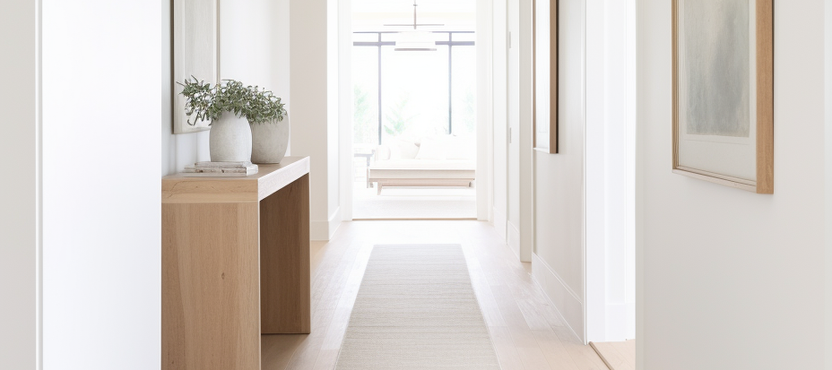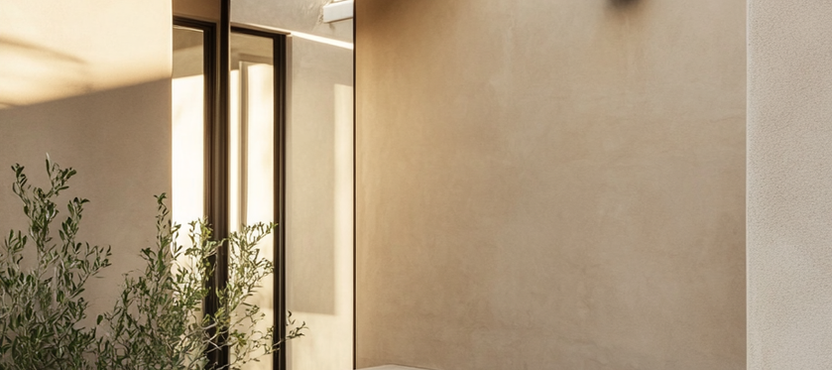Hanging Light Fixtures: The Ultimate Guide to Perfect Placement
- Beril Yilmaz

- Feb 13
- 4 min read
Lighting is one of the most powerful design elements in any space. It sets the mood, enhances functionality, and adds a layer of style that can make or break a room’s aesthetic. But when it comes to hanging light fixtures, proper placement is everything. A pendant that’s too low can obstruct views, while one that’s too high may not provide enough illumination. The wrong size fixture can make a space feel off-balance, and incorrect spacing can lead to an uneven, unflattering glow.
So how do you get it just right? We’ve got you covered with this designer-approved guide to hanging light fixtures. Whether you're illuminating your dining table, creating ambiance in your bedroom, or styling the perfect entryway, these expert tips will help you achieve a well-lit, beautifully balanced space.
1. Hanging Light Fixtures: Finding the Right Height for Any Room

One of the most common mistakes in lighting design is incorrect hanging height. Whether it's a chandelier, pendant, or flush mount, every fixture has an optimal placement that ensures both function and aesthetics.
Dining Table: Hang your chandelier or pendant 30 to 36 inches above the tabletop for the perfect balance of illumination and eye contact.
Kitchen Island: Keep pendant lights 30 to 36 inches above the counter and space them evenly apart for proper task lighting.
Entryway: Ensure chandeliers or pendants in tall foyers hang at least 7 feet from the floor or higher for grand impact.
Hallways: Opt for flush or semi-flush fixtures that allow at least 6.5 to 7 feet of clearance to avoid any head bumps.
The goal is to provide adequate lighting without obstructing views or making the fixture feel out of place.
2. Hanging Light Fixtures: Choosing the Perfect Size for the Space

Bigger isn’t always better, but a fixture that’s too small can feel underwhelming. The key is proportion. Use this simple formula:
For chandeliers or pendants in open spaces: Add the room’s length and width (in feet) together to determine the ideal fixture diameter in inches. Example: A 12’ x 14’ room = a 26” wide fixture.
For dining tables: The fixture should be half to two-thirds the width of the table for balanced proportions.
For kitchen islands: If using multiple pendants, each should be one-third the width of the island, ensuring proper spacing.
A well-sized fixture complements the room’s scale, creates balance, and enhances the overall design.
3. Hanging Light Fixtures: Layering Light for the Best Ambiance

Relying on a single light source can leave a space feeling flat or harsh. The secret to a beautifully lit home is layering different types of lighting.
Ambient lighting: This is your general overhead lighting—pendants, chandeliers, or flush mounts that provide overall illumination.
Task lighting: Focused lighting for specific activities, such as under-cabinet lighting in the kitchen or reading sconces in the bedroom.
Accent lighting: Decorative lighting that adds warmth and dimension, such as wall sconces, picture lights, or LED strips behind mirrors.
By combining multiple sources of light, you create depth, functionality, and a welcoming atmosphere in any room.
4. Hanging Light Fixtures: The Secret to Perfect Spacing

Even if you choose the perfect fixture, improper spacing can throw off the entire design. Here’s how to get it right:
Multiple pendants: Space them 24 to 30 inches apart for even lighting distribution.
Over a table: Leave at least 6 inches from the table’s edge to avoid an overcrowded look.
Sconces next to mirrors: Keep them 36 to 40 inches apart for balanced facial lighting.
Wall sconces in hallways: Mount them 60 to 66 inches from the floor for eye-level illumination.
A well-planned layout ensures an even spread of light while maintaining a visually appealing design.
5. Hanging Light Fixtures: Selecting the Right Bulbs for Each Space

Lighting isn’t just about placement—it’s also about choosing the right bulbs to set the right mood and functionality.
Warm light (2700K-3000K): Best for living rooms, bedrooms, and dining areas, where a cozy and inviting atmosphere is key.
Cool light (3500K-4000K): Ideal for kitchens, bathrooms, and workspaces where clarity and focus are needed.
Daylight (5000K+): Best for areas requiring maximum brightness, such as garages and home offices.
Opt for dimmable LED bulbs whenever possible, allowing you to adjust brightness levels for different times of the day and various activities.
6. Hanging Light Fixtures: Avoiding Common Mistakes

Even the best-designed lighting plans can go wrong with these common mistakes:
Hanging fixtures too high or too low – A chandelier hung too high loses its impact, while a pendant hung too low can be obstructive.
Choosing the wrong size fixture – A light that’s too small disappears, while an oversized fixture can overwhelm the space.
Using only one type of lighting – A room with only overhead lighting can feel flat; layer lighting for depth and warmth.
Neglecting dimmer switches – Dimmers add flexibility, allowing you to adjust brightness for different moods and occasions.
Being mindful of these pitfalls will help you create a lighting scheme that’s both functional and visually stunning.
Hanging Light Fixtures: FAQs
Q: How do I know if my chandelier is the right height?A: In dining rooms, it should be 30 to 36 inches above the table. In other spaces, keep at least 7 feet of clearance from the floor.
Q: What’s the best way to space multiple pendants over an island?A: Space them 24 to 30 inches apart, ensuring even lighting and a balanced look.
Q: Can I mix different light fixtures in the same space?A: Absolutely! Mixing styles can add character—just ensure they share a common element (finish, shape, or scale) for cohesion.
Q: Do I need an electrician to install a new hanging light fixture?A: If you're replacing an existing fixture, you may be able to DIY. However, for new wiring or complex installs, it's best to hire a professional.
Need Help Designing the Perfect Lighting Plan?
At BY Design And Viz, we specialize in creating beautiful, functional lighting designs that elevate your space. Whether you're looking to enhance your home’s interior or add architectural lighting to your exterior, our team of experts can bring your vision to life.
Contact us today for a consultation and let’s transform your space with the perfect lighting plan!


































